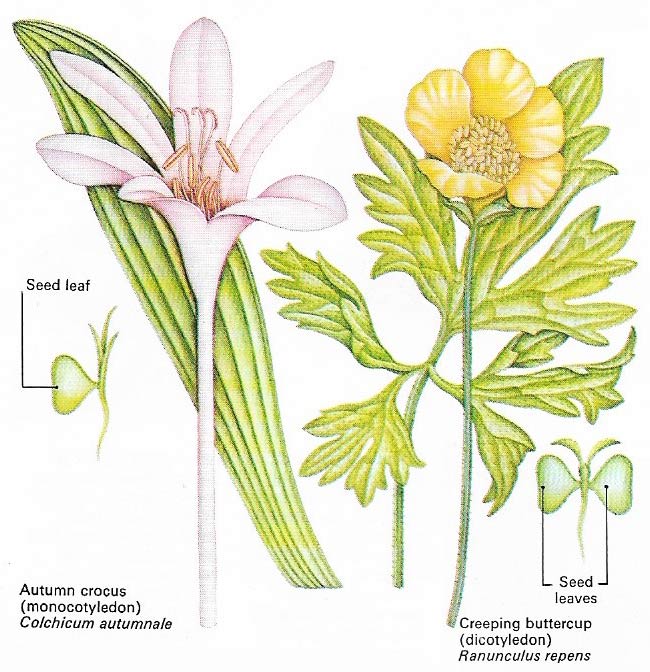angiosperm

Figure 1. Angiosperms are seed-bearing plants with ovules enclosed in ovaries. They are divided into monocotyledons (one seed leaf; parallel-veined leaves) and dicotyledons (two seed leaves; net-veined leaves).
An angiosperm is any member of the phylum Angiospermophyta, comprising plants that produce flowers, fruits, and seeds. Angiosperms, of which about 250,000 species are known, include most herbs, shrubs, many trees, fruits, vegetables, and cereals. Their seeds are protected by an outer covering made of tissue of the parent plant, rather than being unprotected as in the only other seed-bearing group, the gymnosperm. (The term "angiosperm" comes from the Greek aggeion for "vessel" and sperma for "seed.")
Angiosperms have sophisticated mechanisms to ensure pollination and fertilization take place and that the resulting seeds are readily dispersed and able to germinate. Angiosperms are further divided into two classes, monocotyledons and dicotyledons.


